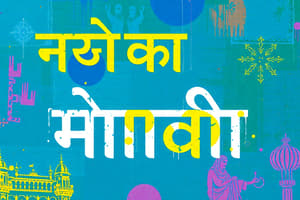Podcast
Questions and Answers
How did the Delhi Sultanate and Mughal Empire periods impact the evolution of the Hindi language?
How did the Delhi Sultanate and Mughal Empire periods impact the evolution of the Hindi language?
Persian significantly influenced Hindi, leading to the emergence of Hindustani.
In what ways does the Devanagari script reflect the phonological structure of Hindi?
In what ways does the Devanagari script reflect the phonological structure of Hindi?
Each consonant has an inherent vowel (usually 'a'), and vowels are written as independent letters or diacritics.
How does the grammatical structure of Hindi, particularly its SOV word order, influence sentence construction and meaning?
How does the grammatical structure of Hindi, particularly its SOV word order, influence sentence construction and meaning?
The subject typically comes first, then the object, and the verb appears at the end of the sentence.
What role do loanwords from Sanskrit, Persian, Arabic, and English play in the richness and adaptability of Hindi?
What role do loanwords from Sanskrit, Persian, Arabic, and English play in the richness and adaptability of Hindi?
In what specific ways are Hindi and Urdu mutually intelligible, and what are the primary factors that lead to divergence?
In what specific ways are Hindi and Urdu mutually intelligible, and what are the primary factors that lead to divergence?
How has Bollywood contributed to the propagation and perception of Hindi, both within India and globally?
How has Bollywood contributed to the propagation and perception of Hindi, both within India and globally?
What is the significance of the Bhakti movement in the development of early Hindi literature?
What is the significance of the Bhakti movement in the development of early Hindi literature?
Besides India, name three countries where Hindi speakers can be found, and briefly explain why Hindi is spoken there.
Besides India, name three countries where Hindi speakers can be found, and briefly explain why Hindi is spoken there.
Describe the function of postpositions in Hindi grammar, and how does this differ from the use of prepositions in English?
Describe the function of postpositions in Hindi grammar, and how does this differ from the use of prepositions in English?
How does the official status of Hindi as one of the languages of the Union Government of India impact its usage in government proceedings and communication?
How does the official status of Hindi as one of the languages of the Union Government of India impact its usage in government proceedings and communication?
Flashcards
What is Hindi?
What is Hindi?
An Indo-Aryan language spoken chiefly in India; one of the two officially recognized languages of the Government of India.
What is Khariboli?
What is Khariboli?
The dialect from which Modern Standard Hindi evolved; spoken in Delhi and surrounding areas.
What is Devanagari?
What is Devanagari?
A script in which Hindi is written; an abugida where each consonant has an inherent vowel. It is written from left to right.
What are Tatsam words?
What are Tatsam words?
Signup and view all the flashcards
What are Tadbhav words?
What are Tadbhav words?
Signup and view all the flashcards
What is the origin of most Urdu words?
What is the origin of most Urdu words?
Signup and view all the flashcards
What is the word order of Hindi?
What is the word order of Hindi?
Signup and view all the flashcards
What is Bollywood?
What is Bollywood?
Signup and view all the flashcards
What is Modern Standard Hindi?
What is Modern Standard Hindi?
Signup and view all the flashcards
What is Urdu?
What is Urdu?
Signup and view all the flashcards
Study Notes
- Hindi is an Indo-Aryan language spoken chiefly in India.
- Modern Standard Hindi is one of the two officially recognized languages of the Government of India.
- Hindi is an official language in 9 states and 3 union territories.
History
- Hindi's origin can be traced back to the 7th century AD.
- It evolved from the अपभ्रंश (Apabhraṃśa) dialect, a descendant of Sanskrit.
- By the 11th century, the Apabhraṃśa dialects were becoming more distinct.
- Modern Standard Hindi evolved from the Khariboli dialect of Delhi and surrounding areas.
- During the Delhi Sultanate and Mughal Empire, Persian significantly influenced Hindi, resulting in the emergence of Hindustani.
- In the 18th century, a standardized form of Hindi began to develop.
- Bharatendu Harishchandra played a key role in modernizing Hindi literature in the late 19th century
- Hindi became an official language of India in 1949.
Geographical Distribution
- Hindi is primarily spoken in the Hindi Belt region of India.
- This includes states like Uttar Pradesh, Madhya Pradesh, Bihar, Haryana, Rajasthan, Uttarakhand, Chhattisgarh, Himachal Pradesh, Jharkhand, and Delhi.
- Due to migration, Hindi speakers can be found in other parts of India and around the world.
- Outside India, Hindi speakers are present in countries like Nepal, the United States, Mauritius, South Africa, Yemen, Uganda, Singapore, New Zealand, and Germany.
Official Status
- Hindi is one of the two official languages of the Union Government of India, with English as the other.
- The official language of the government is used in parliamentary proceedings, communication between central government departments, and other official purposes.
- States within India have the autonomy to choose their own official languages.
- Hindi is the official language of several states and union territories, often alongside other regional languages.
Writing System
- Hindi is written in the Devanagari script.
- Devanagari is an abugida, meaning each consonant has an inherent vowel (usually 'a').
- Vowels can be written as independent letters or as diacritics modifying consonants.
- The script is written from left to right.
- Devanagari is also used for other languages like Sanskrit, Marathi, and Nepali.
Phonology
- Hindi has a rich phonological system.
- It includes a variety of consonants and vowels, including nasalized vowels and retroflex consonants.
- The pronunciation of Hindi words can vary depending on the region and the speaker's background.
Grammar
- Hindi is an SOV (subject-object-verb) language.
- Nouns in Hindi have grammatical gender (masculine or feminine) and are inflected for number and case.
- Verbs are conjugated based on tense, aspect, mood, gender, and number.
- Hindi uses postpositions instead of prepositions.
- Word order is relatively flexible, but SOV is the most common.
Vocabulary
- Hindi vocabulary has been influenced by Sanskrit, Persian, Arabic, and English.
- तत्सम (Tatsam) words are Sanskrit loanwords that are used in Hindi with minimal changes.
- तद्भव (Tadbhav) words are Sanskrit loanwords which have undergone changes over time.
- देशज (Deshaj) words are native Hindi words that are not derived from Sanskrit.
- Most Urdu words are of Persian or Arabic origin.
- Borrowing from English is common, especially for technical and modern terms.
Related Languages
- Hindi is closely related to other Indo-Aryan languages spoken in North India.
- These include Urdu, Punjabi, Gujarati, Marathi, Bengali, and Nepali.
- Hindi and Urdu are mutually intelligible in colloquial speech.
- The primary difference between Hindi and Urdu is that Hindi draws more heavily on Sanskrit for its vocabulary, while Urdu draws more heavily on Persian and Arabic.
Literature
- Hindi literature has a rich and diverse history.
- Early Hindi literature includes religious and devotional poetry.
- The Bhakti movement produced famous poets such as Tulsidas, Kabir, and Surdas.
- Modern Hindi literature includes novels, short stories, plays, and essays.
- Prominent Hindi writers include Premchand, Jaishankar Prasad, and Mahadevi Varma.
Influence of Hindi
- Hindi has influenced many aspects of Indian culture, including film, music, and television.
- Bollywood, the Hindi-language film industry in Mumbai, is one of the largest film producers in the world.
- Hindi songs are popular throughout India and among the Indian diaspora.
- Hindi is used in many popular television shows and news programs.
- The popularity of Bollywood and Indian television has contributed to the spread of Hindi.
Learning Hindi
- Hindi is taught as a second language in many schools in India.
- There are many resources available for learning Hindi online and in classrooms.
- Learning Hindi can be beneficial for those interested in Indian culture, film, and business.
- Knowledge of Hindi can also be useful for traveling in India and communicating with Hindi speakers.
Studying That Suits You
Use AI to generate personalized quizzes and flashcards to suit your learning preferences.
Description
Explore the history and geographical distribution of the Hindi language, an Indo-Aryan language spoken mainly in India. Learn about its evolution from Sanskrit and the influence of Persian, as well as its standardization.




